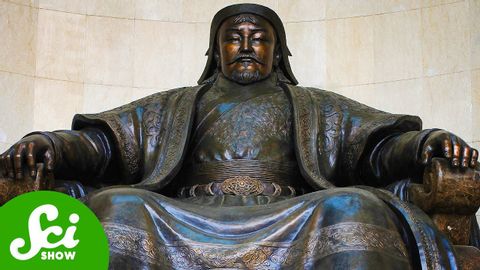原來我們都跟「成吉思汗」有血緣關係?就連白人也是?! (Are We All Related to Genghis Khan?)
VoiceTube 發佈於 2024 年 07 月 31 日  沒有此條件下的單字
沒有此條件下的單字US /məˈtɪriəl/
・
UK /məˈtɪəriəl/
- n. (c./u.)布料;素材;資料;材料;物質
- adj.重要的;物質的
US /ˈɛvɪdəns/
・
UK /'evɪdəns/
- n. (u.)證據;證據 (法律)
- v.t.表明;證明
US /ˈbesɪkəli,-kli/
・
UK /ˈbeɪsɪkli/
- v.i.是重要的
- n. (u.)物質
- n.件事情;問題;原因
